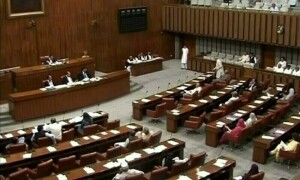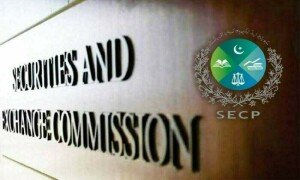KARACHI: As Pakistan is facing with severe natural gas shortage for the last couple of years, it has started relying heavily on Liquefied Natural Gas (LNG), however, the government needs to explore other energy sources to save environment as well as financial spending on the LNG import.
There are other green energy options like solar and wind that can provide cheap environment-friendly energy sources and the country needs go for these options.
This was the crux of one of the two reports “Gas Monitor - Pakistan” and “Tabeer LNG Terminal, Socio-Economic and Environmental Analysis” launched by the Indus Consortium held about the gas provision as an energy source in the country at a ceremony Friday.
The reports launch was attended by representatives of academic institutions, member of GROW Green Network, which is an umbrella of environmental organizations of Pakistan working for the promotion of renewable energy, independent researchers, member of Renewable Energy coalition Pakistan and alliance for climate Justice and clean energy.
Sharing findings of the Gas Monitor - Pakistan report, Dr. Amanullah Mahar, Director, and Center for Environmental Sciences, University of Sindh, Jamshoro, said that since LNG, fossil gas is a very high carbon intensive fuel and cannot be called “transition” fuel source to a cleaner energy system. He explained that fossil gas (methane) can be leaked from the re-gasification, transport, and consumption and processing of it. After carbon dioxide (CO2), methane is the second most abundant anthropogenic greenhouse gas and responsible for 20 percent of worldwide atmospheric emissions. The methane is 25 times more potent than CO2 at absorbing atmospheric heat.
While presenting findings of another report on “Tabeer LNG Terminal, Socio-Economic and Environmental Analysis”, an independent sustainability consultant Fatima Fasih said that keeping the global LNG markets and their volatility in consideration, it is clear that LNG is no longer a financially-viable source of fuel. She said, “Instead of focusing on short-term monetary gains and quick gains in energy for the economy, public and private institutions should focus on building stronger energy security within Pakistan and develop a greener economy through a just and equitable energy transition towards renewable energy.”
She suggested that solar and wind power have shown remarkable success in Pakistan from an economic perspective and should be invested in to increase their ratios within the country’s energy mix and help the country transition towards a just and sustainable energy transition.
Copyright Business Recorder, 2022

























Comments
Comments are closed.